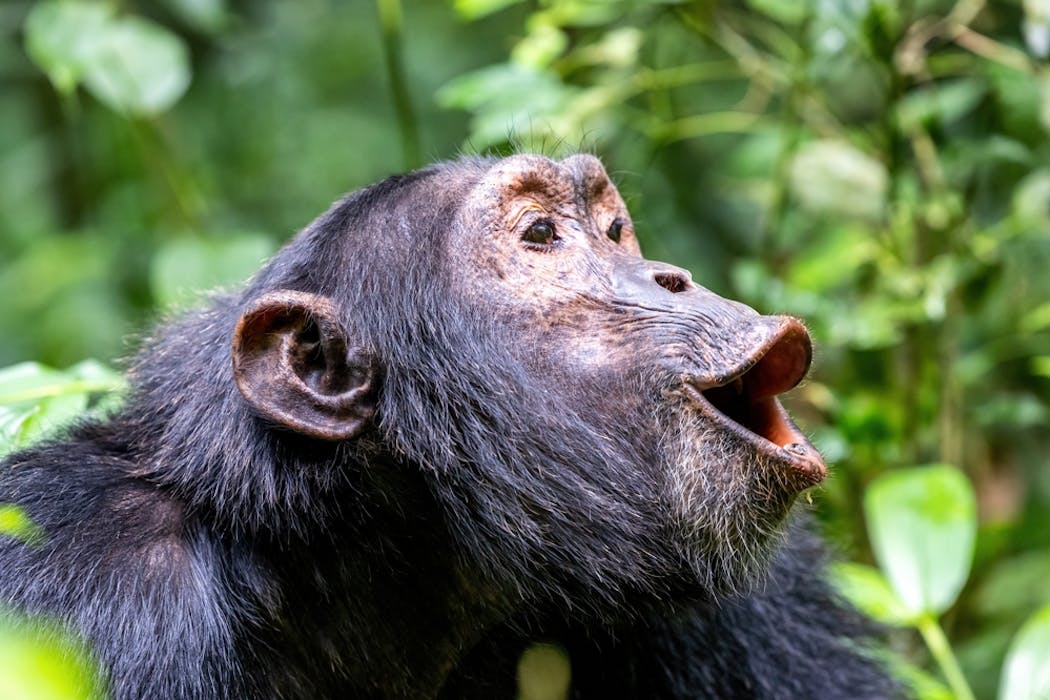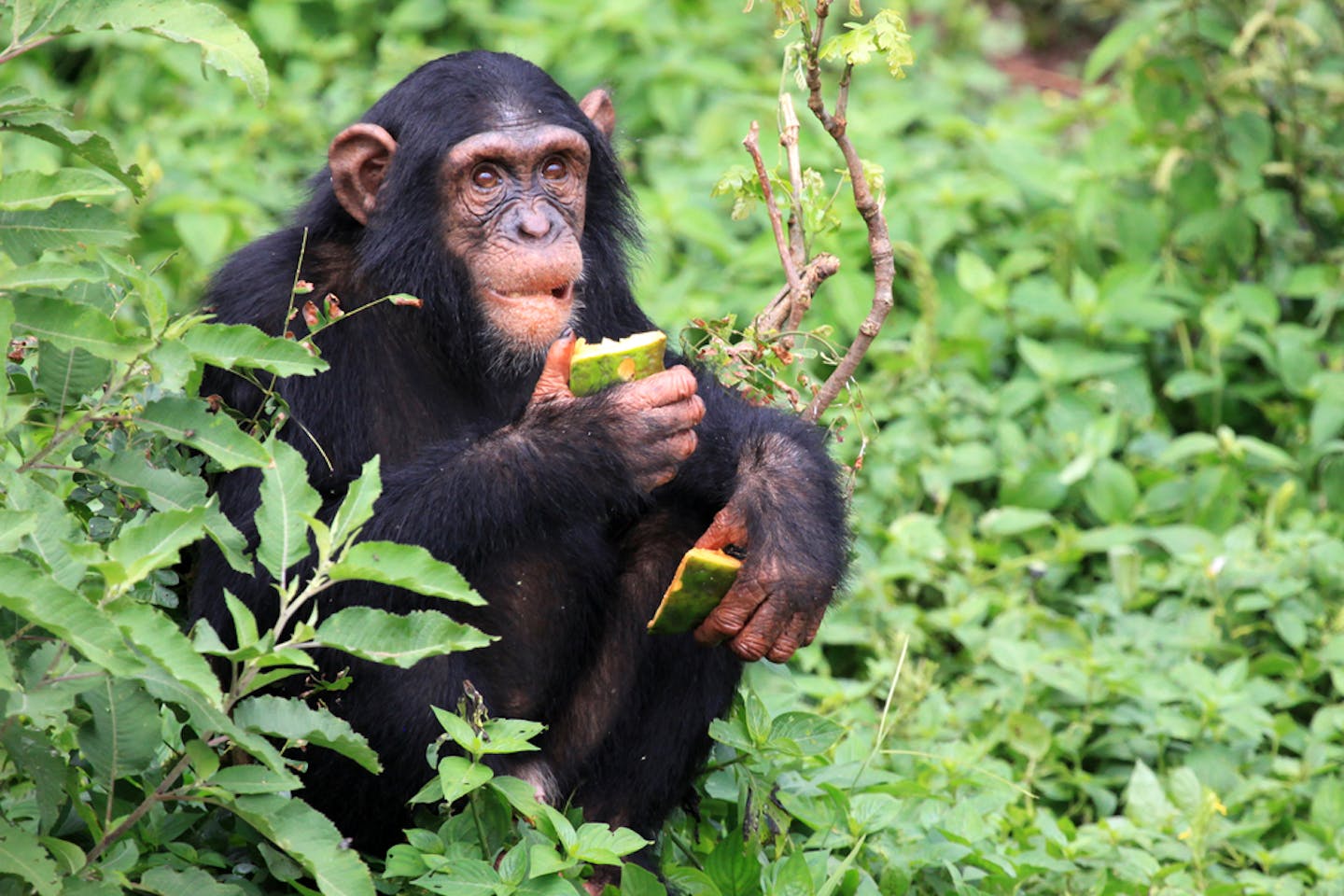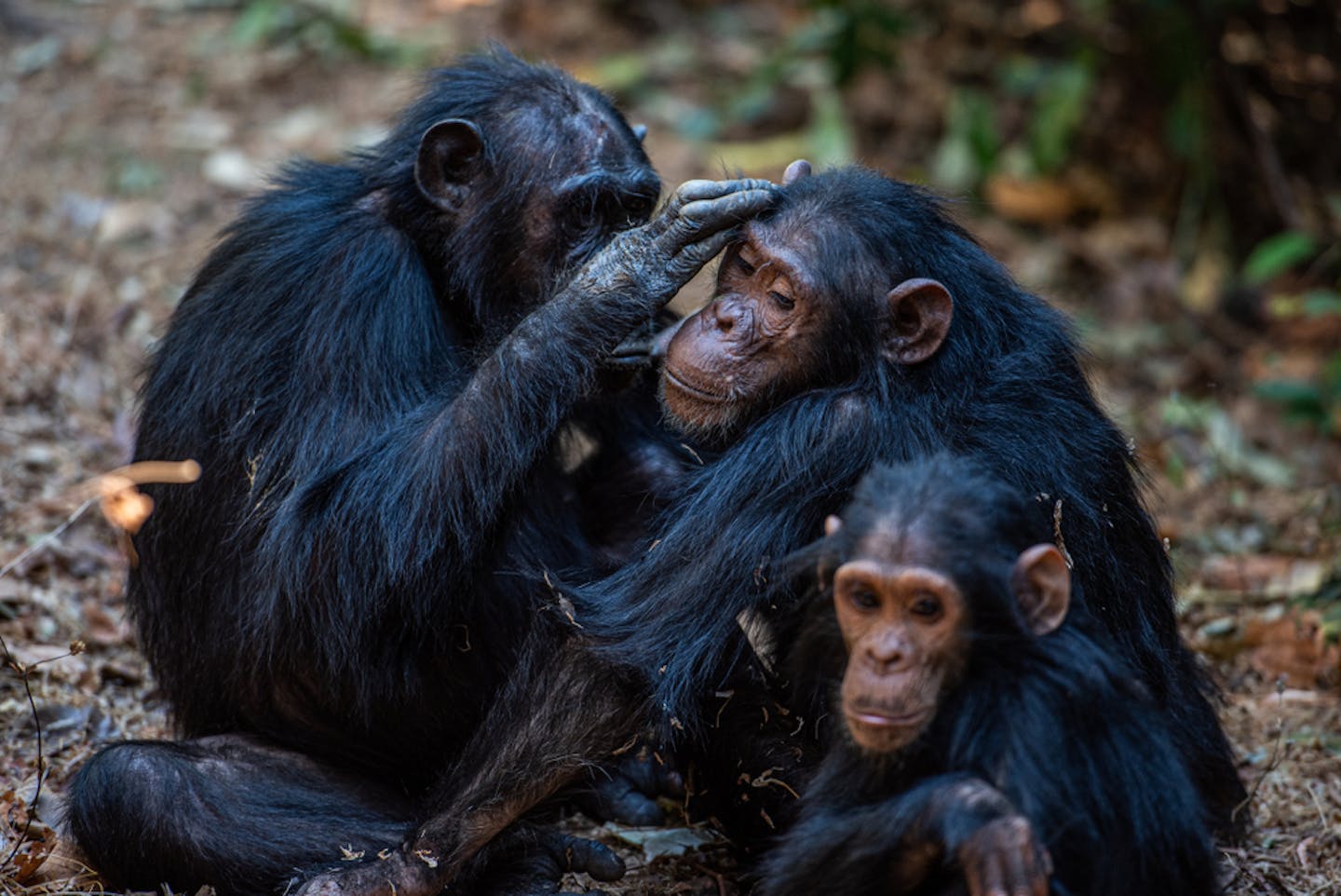
This roundup of The Conversation’s climate coverage was first published in our award-winning weekly climate action newsletter, Imagine.
As the world mourns Jane Goodall, the pioneering chimpanzee scientist and campaigner who died last week aged 91, it’s worth asking what chimpanzees can still teach us about climate change. They not only have a few tricks for surviving a warming planet – they’ve also helped to cool it.
Most of the world’s 200,000 or so wild chimpanzees live in the huge rainforests of west and central Africa, the second largest in the world.
As recently as 2,500 years ago, much of this rainforest had withered away, broken into scattered fragments by a sudden lengthening of the dry season. Yet within five centuries, the forest had largely recovered.
Trees didn’t do this by themselves.
Chimpanzees, among other species, had acted as the forest’s “proto-gardeners”. That’s according to Alex Chepstow-Lusty, a paleoecologist then the University of Cambridge (now at the University of Sussex).
Chepstow-Lusty looked at the oil palm tree, which “demands a lot of light and so thrives in open areas or in the gaps created in forests when the canopy opens up rather than in the dense centre”. This means it often acts as a “‘pioneer species’ allowing the forest to regrow”.
But, he notes a problem: the oil palm’s large seeds are too heavy to be blown in the wind. “They therefore need to be dispersed in the poo of animals such as chimpanzees which are able to swallow the large seeds and for whom the bright orange flesh can be an important part of the diet. And this is how chimps and other seed-dispersers played a crucial role in regenerating Africa’s rainforests.”

Without chimpanzees, the forest would have taken far longer to recover – if it ever did. “Maybe we need to consider the true value of chimp poo, and those that produce it”, says Chepstow-Lusty.
But if chimpanzees once helped the planet heal itself, today that partnership is under strain.
Read more: Chimpanzees once helped African rainforests recover from a major collapse
Adaptation written in their genes
Across Africa’s mix of forest and savanna, chimpanzees have evolved with their habitats. Harrison J. Ostridge of UCL Genetics Institute and his co-authors recently wrote about their work with a team who collected faecal samples from “hundreds of wild chimpanzees across 17 African countries”.
They found different populations have developed distinct adaptations: those in wetter regions have to survive infectious diseases, for instance, while others have to cope with life in hotter and drier open woodland.
This, they suggest, means chimpanzee populations across Africa are “not interchangeable”. Genetic diversity is typically a form of resilience, but as climate zones shift and habitats shrink, some chimpanzees may find themselves trapped in the wrong place. And while it takes thousands of years for genes to change, the climate is changing in decades.
Read more: Chimpanzee genes have changed over time to suit local conditions – new study
Variable habits, variable behaviour
If DNA adapts over millennia, behaviour can adapt within a lifetime.
A team from UCL, Harvard and Liverpool John Moores wrote about their work compiling data from 144 wild chimpanzee communities across Africa’s forests and savanna. They found populations that had learned to dig wells, or to take refuge from extreme heat in caves. Some chimpanzee populations used all sorts of tools, while others barely used any.
The common thread was an adaptation to local circumstances. “Chimpanzees meet variable habitats with variable behaviour”, in their words.

This flexibility may help chimpanzees weather the next degree or two of climate breakdown. But behavioural diversity depends on a strong social life. Young chimps learn by watching others, by playing and imitating. And if that social culture is lost, so is some of their ability to adapt to climate change.
A cultural collapse
That same UCL–John Moores team have documented a “cultural collapse” in chimpanzees. “The more that humans had disturbed an area”, they write, “the less behavioural variants are exhibited by nearby chimpanzees”. Animals are forced to forage in smaller groups, with less long distance communication through hoots or drumming on tree trunks. This “lowers the chance of learning socially from one another” and makes it harder to spread any culture.
Why does it matter, they ask, “if the species is gradually merging into a single cultural entity that stretches all the way from Senegal to Tanzania”? After all, most animals don’t have distinct cultures.
One reason is that a loss of social learning makes chimpanzees more vulnerable: “A loss of behavioural diversity [could compromise how they respond] to changes in food availability and how they adapt to climate change.”
Read more: A chimpanzee cultural collapse is underway, and it's driven by humans
Carrying on Goodall’s legacy
Jane Goodall bridged science and society in a way very few others have managed since. One of those few is Ben Garrod, a professor of evolutionary biology and science engagement at the University of East Anglia. A BBC television presenter and a primate scientist, he’s worked with Goodall and her foundation and says we need more Jane Goodalls.
“There will be countless ways we can carry on with Jane’s legacy”, he writes, “but one of the most powerful is to encourage more of us to make science accessible for all of us”.
Read more: Why we need more Jane Goodalls
![]()


 The Conversation
The Conversation
 Press of Alantic City Business
Press of Alantic City Business Newsday
Newsday Bozeman Daily Chronicle
Bozeman Daily Chronicle Green Bay Press-Gazette
Green Bay Press-Gazette Eyewitness News 3
Eyewitness News 3 The Post and Courier
The Post and Courier Courier Post
Courier Post Charleston Gazette
Charleston Gazette Deseret News
Deseret News Community Impact Newspaper
Community Impact Newspaper The Babylon Bee
The Babylon Bee